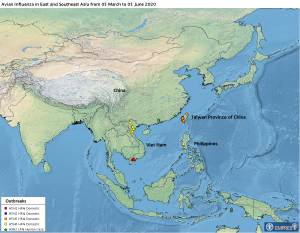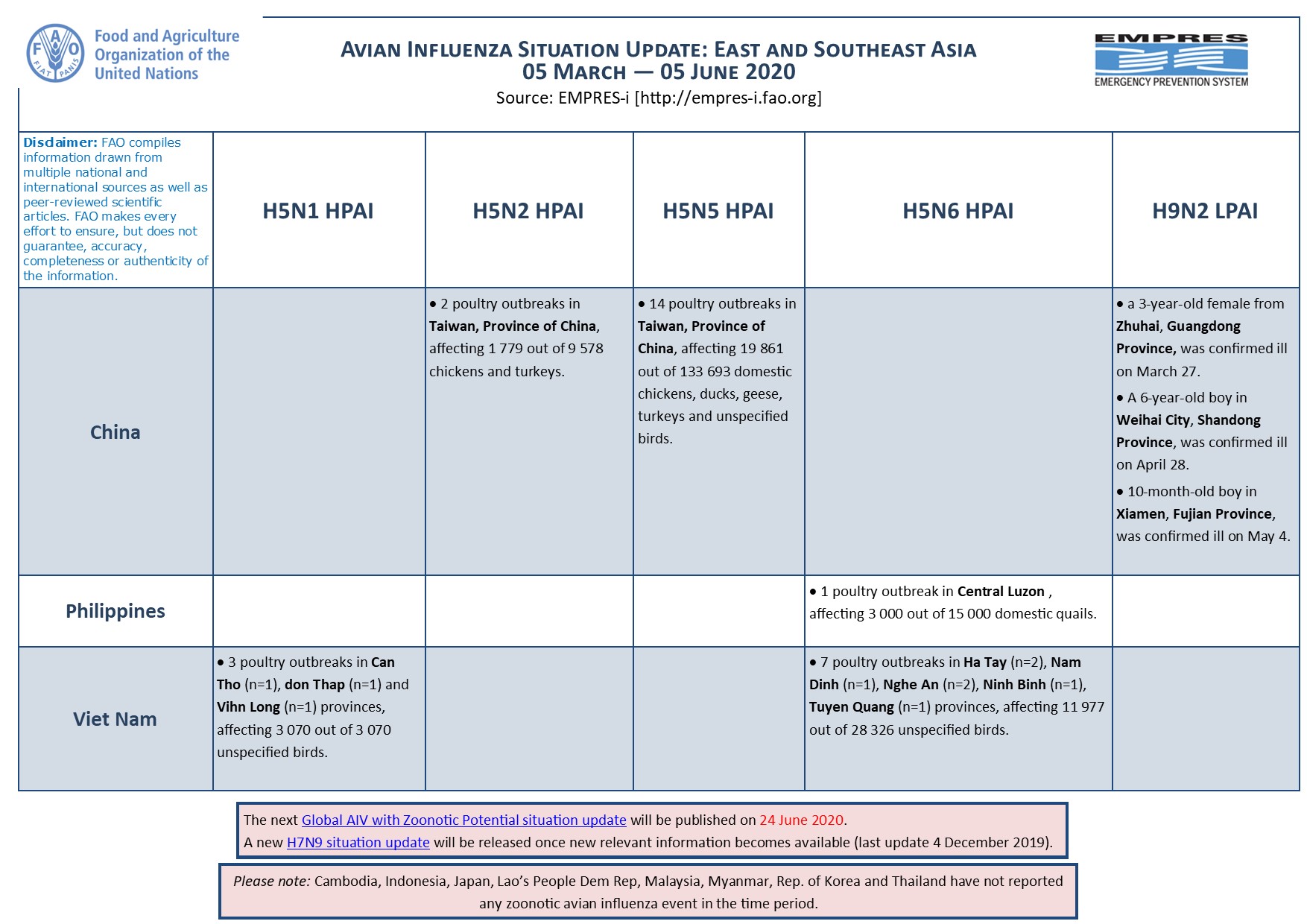FAO/EMPRES-AH is constantly monitoring the avian influenza situation worldwide and compiles information from multiple national and international sources as well as peer-reviewed scientific articles. Close collaboration with country and regional offices, the implementation of avian influenza field surveillance projects, and networks of expertise like OIE/FAO’s OFFLU (www.offlu.net) provide access to timely information on outbreaks, surveillance findings, and genetic similarities of circulating viruses or their virological features. This information is stored in the EMPRES Global Animal Disease Information System (EMPRES-i), a database that can be accessed online at empres-i.fao.org.

Avian Influenza in East and Southeast Asia from 05 March to 05 June 2020 ©EMPRES-i
During the period 5 March to 5 June 2020, five different avian influenza virus subtypes have been reported in East and South-East Asia, four of them highly pathogenic in poultry (H5N1, H5N2, H5N5 and H5N6 HPAI) and one low pathogenic in poultry (H9 LPAI). In Viet Nam, three poultry outbreaks were confirmed in Can Tho, Don Thap and Vihn Long provinces, affecting 3 070 out of 3 070 unspecified birds. In addition, H5N6 HPAI caused seven poultry outbreaks in Northern Viet Nam, where an increase in the number of H5N6 HPAI reports was observed compared to the same period last year. The Philippines also reported one H5N6 HPAI outbreak in domestic quail, marking the first introduction of this subtype in the country. In Taiwan, Province of China, two H5N2 HPAI outbreaks were reported in chickens and turkeys. H5N5 HPAI caused 14 additional outbreaks in domestic chickens and geese in Taiwan, Province of China.
In addition, China reported a total of three human A(H9) cases in Fujian, Guangdong, and Shandong provinces, all of them occurring in young age children.
Highly pathogenic H5N1, H5N2, H5N5 and H5N6 viruses have demonstrated the ability to spread via migratory water birds.
We consider avian influenza activity to be lowest in the period from June to September, thus reports of outbreaks in poultry or detections in wild birds and humans are expected to decrease over the coming months in the region.

AI situation update ©EMPRES-i





